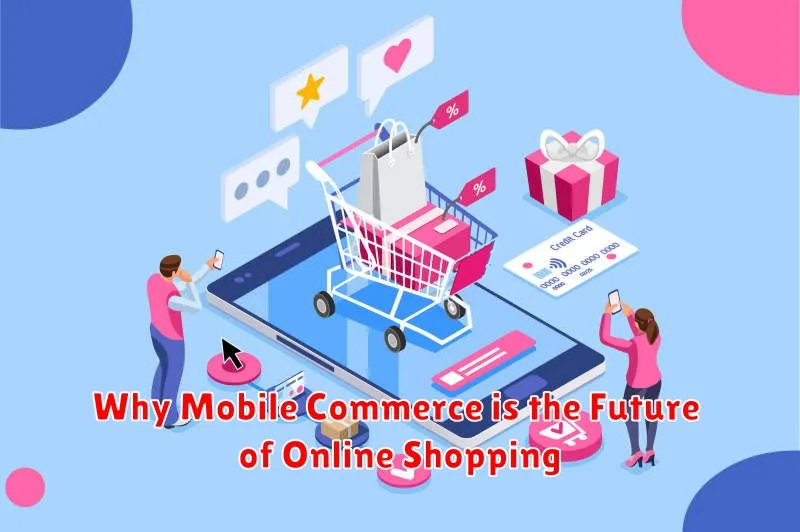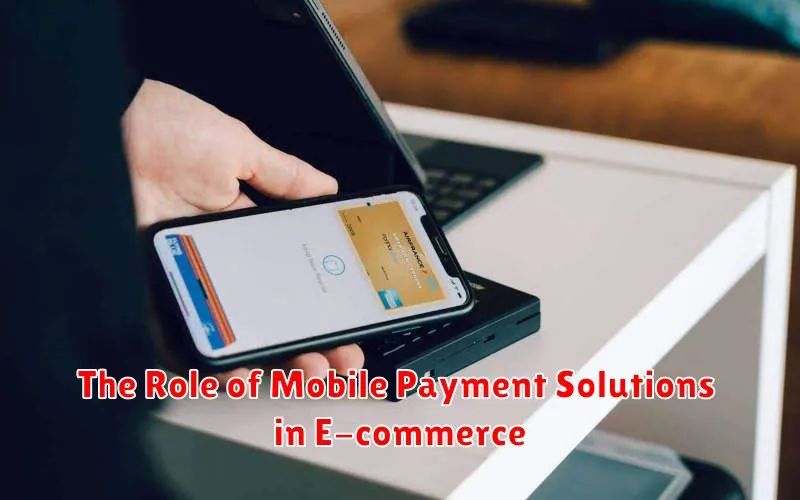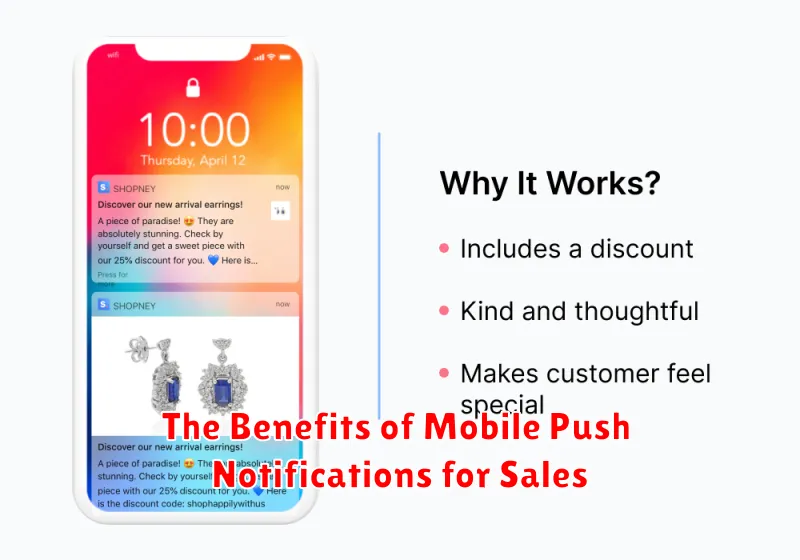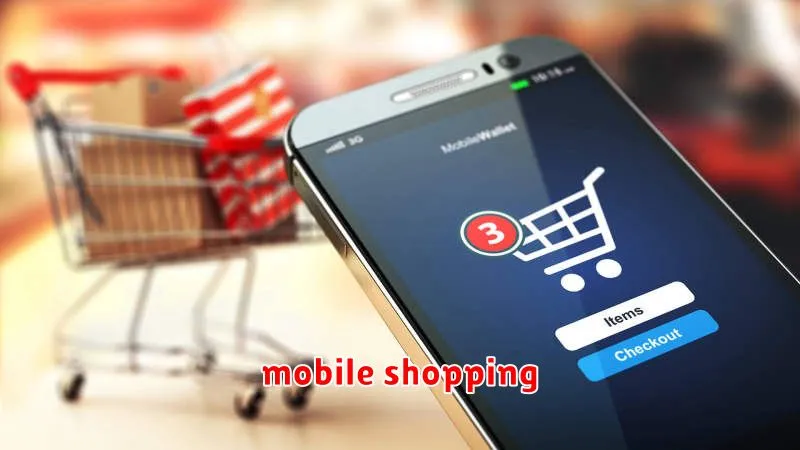In today’s rapidly evolving digital landscape, mobile commerce (m-commerce) has become paramount for businesses of all sizes. The sheer volume of consumers accessing the internet and making purchases via their smartphones and tablets necessitates a robust mobile-first strategy. This article will delve into the critical importance of mobile commerce and provide actionable insights on how to effectively optimize your business for this vital sales channel, covering essential aspects such as mobile website design, user experience (UX), and mobile marketing strategies to maximize your return on investment (ROI) in the competitive world of e-commerce.
Why Mobile Commerce is the Future of Online Shopping

Mobile commerce (m-commerce) is rapidly becoming the dominant force in online shopping due to several key factors. The widespread adoption of smartphones and the increasing accessibility of high-speed internet are fundamental drivers. Consumers are increasingly comfortable making purchases directly from their mobile devices, leading to a surge in m-commerce transactions.
The convenience offered by mobile shopping is unparalleled. Consumers can shop anytime, anywhere, eliminating the need to be tethered to a desktop computer. Personalized experiences, enabled by location-based services and tailored recommendations, further enhance the mobile shopping experience, increasing customer engagement and loyalty.
Moreover, the growth of mobile payment systems, such as Apple Pay and Google Pay, has streamlined the checkout process, making mobile transactions quicker and more secure. This increased ease and security directly contributes to the rise in mobile commerce adoption. The future of online shopping undeniably lies in the continued expansion and optimization of mobile commerce platforms.
Businesses that fail to adapt to this shift risk losing significant market share to competitors who embrace mobile-first strategies. Investing in a user-friendly mobile website or app, incorporating mobile-specific marketing tactics, and prioritizing mobile optimization are crucial for success in the evolving landscape of online retail.
How to Optimize Your Website for Mobile Users
Mobile optimization is crucial for success in today’s market. A poorly designed mobile website can lead to high bounce rates and lost sales. To ensure a positive mobile user experience, focus on these key areas:
Responsive Design: Implement a responsive design that adapts seamlessly to different screen sizes. This ensures your website looks and functions correctly on all devices, from smartphones to tablets.
Page Speed: Fast loading times are paramount. Optimize images, minimize HTTP requests, and leverage browser caching to improve your site’s speed. Tools like Google PageSpeed Insights can help identify areas for improvement.
Mobile-First Indexing: Google primarily uses the mobile version of your website for indexing and ranking. Ensure your mobile site is well-structured, easy to navigate, and contains all the important content.
Easy Navigation: A simple, intuitive navigation system is crucial for mobile users. Use clear menus, large buttons, and easy-to-read fonts.
Touch-Friendly Interface: Design elements should be large enough to be easily tapped with a finger. Avoid small buttons or links that are difficult to select.
Testing: Regularly test your website on various devices and browsers to ensure it functions correctly and provides a positive user experience. Use browser developer tools or emulators to simulate different screen sizes.
By focusing on these key elements, you can significantly improve your website’s performance and user experience for mobile users, ultimately boosting your mobile commerce success.
The Role of Mobile Payment Solutions in E-commerce

Mobile payment solutions are crucial for the success of e-commerce businesses. They offer a streamlined and convenient checkout experience for customers, significantly impacting conversion rates. Faster transactions and reduced cart abandonment are key benefits.
The variety of mobile payment options available, such as Apple Pay, Google Pay, and PayPal, caters to diverse customer preferences. This broad acceptance enhances customer satisfaction and encourages repeat purchases. Integration of these solutions also simplifies the payment process, reducing friction and improving the overall user experience.
Beyond convenience, mobile payment solutions offer enhanced security features, including tokenization and biometric authentication. This builds customer trust and reduces the risk of fraudulent transactions, essential for maintaining a positive brand reputation.
Furthermore, data collected through mobile payment systems provides valuable insights into customer behavior, enabling businesses to optimize their marketing strategies and improve their overall offerings. This data-driven approach allows for more personalized experiences and more effective targeting.
In conclusion, the seamless integration of robust mobile payment solutions is not just beneficial, but essential for businesses aiming to thrive in the competitive landscape of mobile commerce.
Creating a Seamless Mobile Shopping Experience
A seamless mobile shopping experience is crucial for success in today’s mobile-first world. Consumers expect speed, ease of use, and a frictionless journey from browsing to purchase.
Speed and performance are paramount. Slow loading times lead to high bounce rates. Optimize images, minimize redirects, and leverage caching to ensure quick page loads. A responsive design adapting to various screen sizes is essential for a consistent user experience across devices.
Intuitive navigation is key. A clear site structure, easy-to-find search bars, and well-organized product categories make it simple for users to find what they need. Simple checkout processes are also vital. Minimize the number of steps and fields required to complete a purchase. Offer various payment options to cater to different preferences.
Personalized experiences enhance engagement. Tailor product recommendations and promotions based on user browsing history and purchase behavior. Mobile-specific features, such as in-app messaging or mobile-only deals, can further boost engagement and sales.
Finally, thorough testing across different devices and operating systems is critical to identify and resolve any usability issues before launch. Regular monitoring and optimization based on user feedback ensure a constantly improving mobile shopping experience.
How to Leverage Mobile Apps for E-commerce Growth
A dedicated mobile app offers a significant advantage in today’s mobile-first world. It allows for a more personalized and engaging customer experience compared to a mobile website.
Push notifications are a powerful tool for driving sales and increasing customer engagement. They enable targeted marketing and timely reminders about abandoned carts or special offers.
Improved user experience is key. A well-designed app provides seamless navigation, fast loading times, and intuitive functionality, leading to higher conversion rates. Consider features like easy checkout processes and saved payment information.
Data collection capabilities within apps are invaluable. This data can be used to gain deeper insights into customer behavior and preferences, enabling more effective marketing strategies and personalized recommendations.
Loyalty programs and rewards within the app can foster customer retention and drive repeat purchases. Exclusive offers and early access to sales can further incentivize app usage.
Offline functionality is another beneficial feature. Allowing users to browse products and make purchases even without an internet connection enhances the user experience and caters to diverse network conditions.
In summary, developing a user-friendly and feature-rich mobile app is crucial for enhancing the customer experience, improving conversion rates, and ultimately driving significant growth in e-commerce sales.
The Benefits of Mobile Push Notifications for Sales

Mobile push notifications offer a powerful tool for boosting sales in the mobile commerce landscape. They provide a direct line of communication with customers, bypassing the clutter of email inboxes and social media feeds.
One key benefit is the ability to deliver targeted promotions and time-sensitive offers. This allows businesses to capitalize on immediate opportunities and increase conversion rates. For example, a flash sale notification or a reminder about abandoned carts can significantly impact sales.
Further, push notifications enhance customer engagement. By sending relevant updates, personalized recommendations, or exclusive content, businesses can foster loyalty and strengthen brand relationships, ultimately leading to repeat purchases.
Increased app usage is another significant advantage. Well-timed notifications can encourage customers to re-engage with the app, exposing them to more products and services. This increased visibility can translate directly into sales.
Finally, push notifications allow for real-time communication, enabling businesses to address customer queries quickly and efficiently, improving the overall shopping experience and fostering positive brand perception.
How to Use SMS Marketing to Drive Mobile Conversions
SMS marketing offers a powerful way to drive mobile conversions. Its high open rates and immediate delivery make it ideal for reaching customers directly on their mobile devices.
To effectively utilize SMS marketing, start with a segmented audience. Target specific customer groups with tailored messages relevant to their interests and purchase history. This personalized approach boosts engagement and conversion rates.
Craft compelling call-to-actions (CTAs). Use strong verbs and create a sense of urgency to encourage immediate action. Include clear instructions and relevant links to your mobile website or app.
Optimize your message length and timing. Keep messages concise and avoid excessive text. Send messages at times when your target audience is most likely to engage, considering their time zones and habits.
Track and analyze your results. Monitor key metrics such as open rates, click-through rates, and conversions to refine your strategy. A/B test different messages and CTAs to determine what resonates best with your audience.
By implementing these strategies, you can leverage SMS marketing to significantly increase your mobile conversions and drive growth in your mobile commerce efforts.
Trends in Mobile Shopping and How to Prepare for the Future
The mobile shopping landscape is constantly evolving. Personalization is key; consumers expect tailored experiences based on browsing history and preferences. Augmented reality (AR) and virtual reality (VR) technologies are gaining traction, allowing customers to virtually try products before purchase. Mobile-first design is no longer optional—it’s essential for a seamless user experience. Voice commerce is also on the rise, with shoppers using voice assistants to make purchases. Finally, mobile payments continue to diversify, with more options becoming available.
To prepare for the future of mobile shopping, businesses must prioritize data analytics to understand customer behavior. Investing in user-friendly mobile apps and optimizing websites for mobile devices is critical. Embracing emerging technologies such as AR/VR and voice search will offer a competitive advantage. Secure and diverse payment options are also vital for building trust and facilitating sales. Finally, providing excellent customer service through various mobile channels is paramount.
By proactively adapting to these trends and investing in the necessary technologies and strategies, businesses can position themselves for success in the ever-changing world of mobile commerce.

